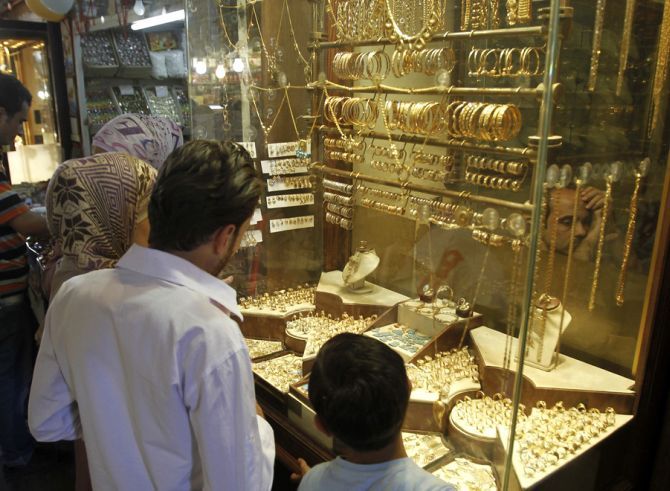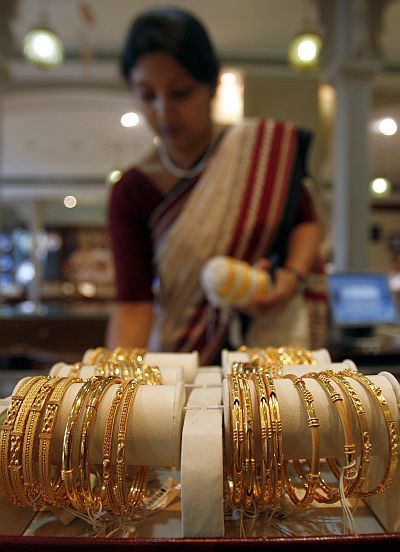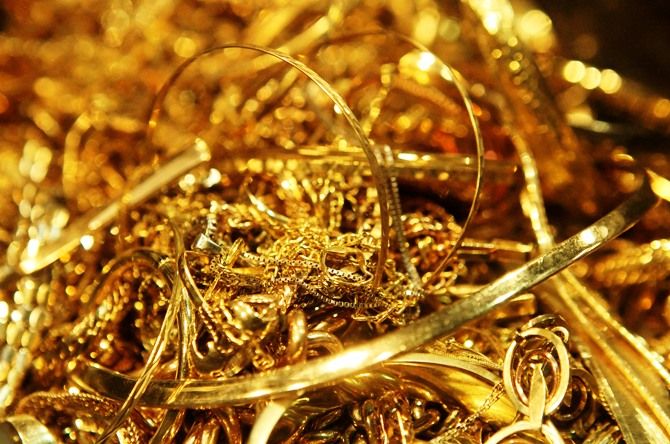The government’s attempt to get India’s gold into the formal system is a good start, but needs some tweaks
The much-awaited draft guidelines on the Gold Monetisation Scheme (GMS) are finally out. At first glance, the most noteworthy changes that this scheme brings about are two.
One, it creates an effective linkage between the Gold Deposit Scheme (GDS) and the Gold Metal Loan (GML). Two, it reduces the minimum deposit amount from 500 to 30 grammes.
In 2013, with the economy faltering and the current account deficit (CAD) touching a high of 4.8 per cent, the then government, in its haste to rein in the CAD, zeroed in on gold imports.
Import duty on gold bullion was raised from two to 10 per cent in a year.
The Reserve Bank of India (RBI) prohibited banks from importing gold on consignment basis and from selling gold coins at their branches.
In August 2013, the RBI also laid down the 80:20 rule, which mandated 20 per cent export of the total gold imported from every consignment.

This created an artificial supply-side crunch that ultimately resulted in an increase in inflow of gold through the grey market into the economy.
Additionally, the export of finished gold jewellery also dropped significantly.
An alternate solution to rein in the CAD would be to reduce the dependency on import and promote monetisation of gold through recycling of domestic stocks of gold. Anecdotal evidence estimates the domestic stock of gold at anywhere between 18,000 and 40,000 tonnes.
In monetary terms this corresponds to between $868 billion and $1.9 trillion.
India’s GDP in 2013 was $1.9 trillion.
While monetising gold has become quite the catch phrase, the concept remains ephemeral largely because execution is elusive.

But it need not be so. It is not that gold does not get monetised in India. It does, and in different ways.
To promote gold monetisation and recycling of existing gold in the economy, the government started the GDS and also allowed gold electronically-traded funds (ETFs).
Gold ETFs failed to grow into a significant market, since the penetration of capital markets in India is largely restricted to metros and tier-I cities.
GDS, meanwhile, has many systemic drawbacks.
A high minimum deposit amount naturally precludes the retail depositor.
For India to monetise gold, it is not the institutional depositor that policymakers must target but the average retail depositor.
A high minimum deposit prevented banks from mobilising significant deposits.

The little that was mobilised was not lent onward to jewellers for various reasons, but mostly due to lack of clarity in interpretation of the regulations.
Furthermore, gold-based infrastructure has not developed significantly in India.
Internationally, the standard for purity and quality of gold, known as “good delivery,” is prescribed by the London Bullion Market Association (LBMA).
For any gold to be traded in international markets, it would have to be refined at LBMA-accredited refineries and meet the good delivery standard. In India, of the 32 refineries, only one is LBMA-accredited. Accurate valuation of gold is a prerequisite for monetisation.
Currently, India has only 331 BIS-recognised assaying and hallmarking centres. For monetisation to truly work, this would have to be scaled up.
Most importantly, the entire ecosystem around gold is rife with mistrust.
Consumers do not always trust the purity of gold provided by jewellers, jewellers do not trust any other certification of gold but their own, banks do not trust the purity certification of gold even if provided by BIS.

The ecosystem cannot be changed overnight, but the GMS is certainly a good beginning.
The key features of the GMS are simple. In its most basic form, the GMS is no different from a regular FD.
An individual can deposit either jewellery or coins at any deposit centre in a city where the scheme will be made available.
The deposit centres are typically BIS hallmarking units that already have the necessary infrastructure to assay the gold.
The assaying of gold has been divided into three stages: XRF assaying, fire test (melting), and refining.
The XRF test is a machine that will reveal the purity of gold, that is, whether the assayed gold is 24 carat, 22 carat and so on.

However, it is only the smelting and refining process that will determine the actual gold purity grammage upon which the deposit amount and therefore the interest will be calculated.
The depositor has the option of taking back the assayed gold in its original form after the XRF test or as gold bars after the fire test.
Once the gold savings account is opened with the bank, the depositor will receive interest on the deposited gold.
Depositors will have to decide at the time of deposit if they would want to redeem as gold or as money, and will also have the flexibility of breaking their deposit, much like an FD.
There is little doubt that the GMS will be more popular than the GDS.
However, the government must also take note of some issues before finalising the guidelines.

First, it must make a distinction between the deposit process for gold jewellery and certified gold coins.
Not all kinds of gold require a rigorous assaying process. Gold coins purchased from banks that have purity certifications and whose packaging has not been tampered with need not be assayed at all.
For the deposit of such gold coins, minimum deposit amounts must be lowered from 30 gm to 10 — if not less.
This will help widen the target market. Second, BIS certification must be universally accepted in India, by banks, jewellers and other institutions.
In order to foster greater trust, random audit checks should be carried out on assaying units.
Third, while the GMS envisages a one-year term with a roll-over option, longer-tenure deposits must be given incentives. After all, gold is a long-term savings product.
 Fourth, consumers may not be in a position to decide at the beginning of a one-year term if they would want cash or gold. Instead, the default redemption option should be set to cash.
Fourth, consumers may not be in a position to decide at the beginning of a one-year term if they would want cash or gold. Instead, the default redemption option should be set to cash.
Should consumers want gold, they should have the option of letting the bank know, at the latest, a few months before maturity.
Fifth, a fully convertible gold certificate should be an option at the time of maturity, which could be redeemed at jewellery stores.
This will be equivalent to physical gold without the hassle of it passing through multiple hands.
Sixth, while lending onward to jewellers, the government must also consider if the interest charged by the bank will be in gold grammage or in money terms.
The former may help in managing gold ALM better.
Furthermore, the fact that only select cities will have GMS will also mean that some jewellery stores will have access to cheaper credit/raw material than others.
However, maintaining lending parity should not be at the cost of the success of GMS.
At the macro level, the government must continue its consultation process on the issuance of an India-branded gold coin, on setting up a gold exchange, and on upgrading our refineries.
As one of the largest consumers of gold, India should aspire to be an active participant in the international market and not just a passive consumer.
Monetisation of gold will reduce India’s dependence on gold imports.
India’s declining savings rate will witness a substantial hike because monetising gold will bring a large part of the “unofficial” savings into the formal economic and financial system.
Photographs: Reuters
Nirupama Soundararajan is head of research at the Pahle India Foundation; Arindam Goswami is a senior research associate at the Foundation. These views are their own









